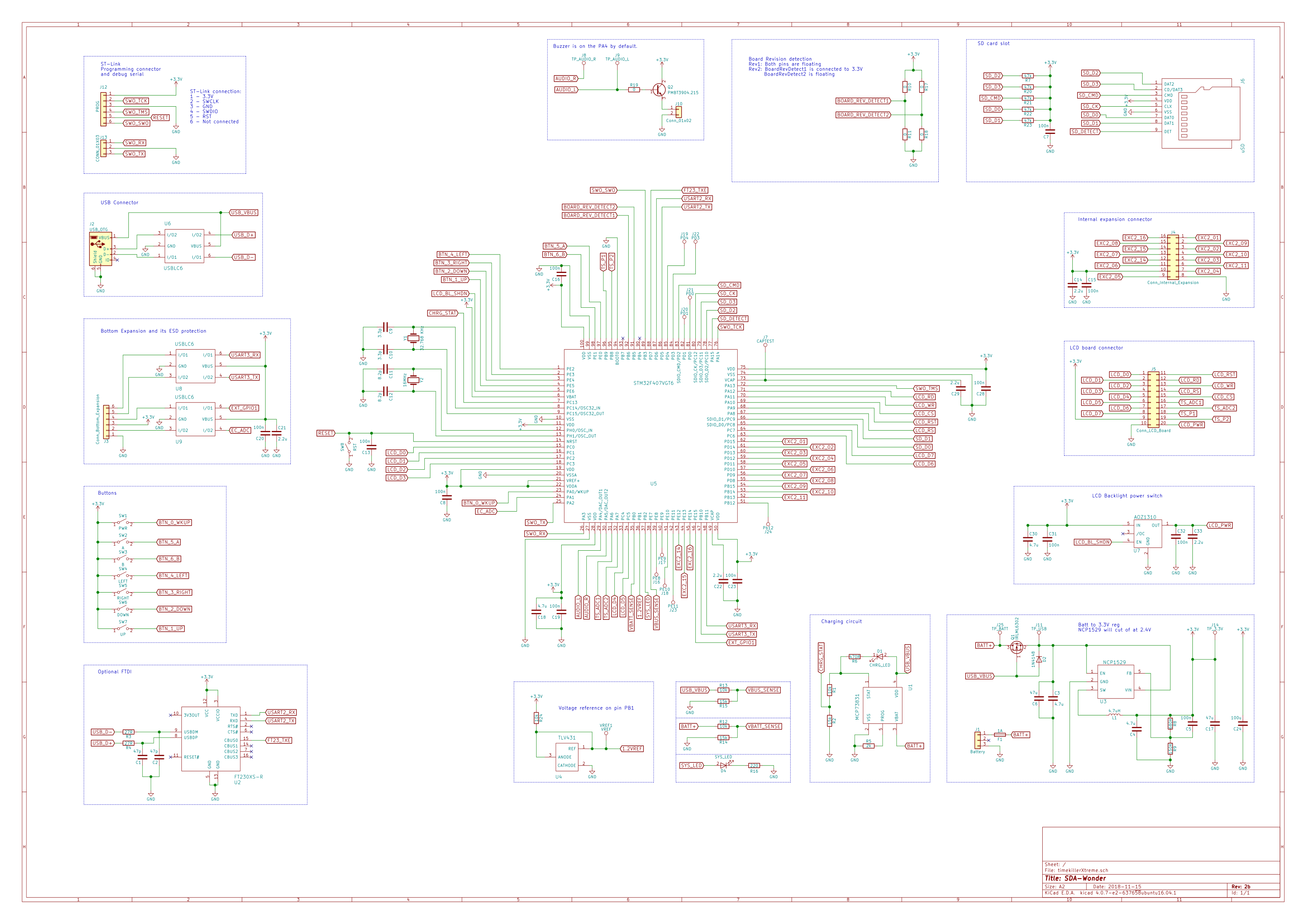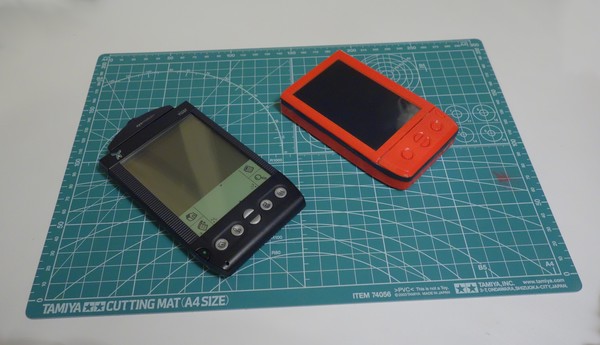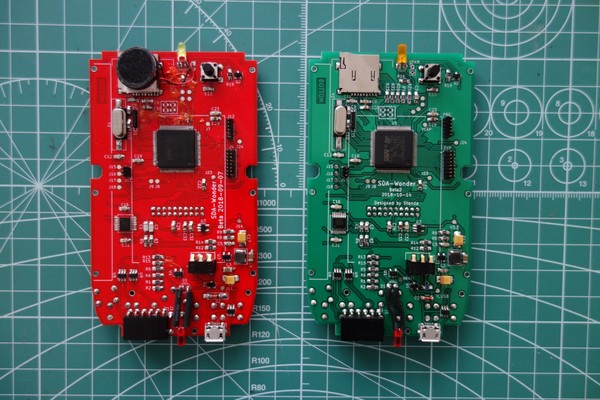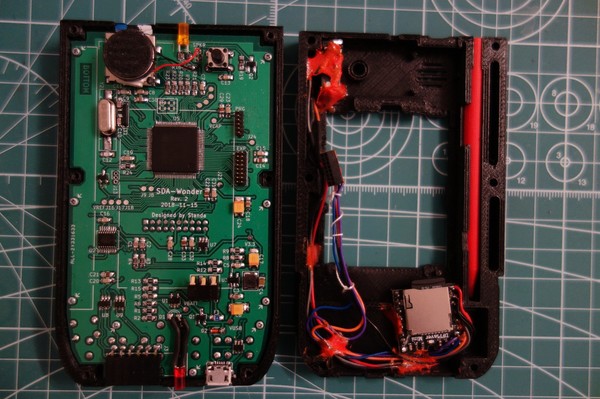Did you miss the CCP?
Do it yourself!

The device is made on an STM32F4 microcontroller and runs under the control of a specially developed OS. Applications for it can be written in a scripting language and placed on a memory card. In standby mode, charging lasts for about five days, with the display on with backlight brightness of 60% - more than six hours.
')
The software used third-party developments under the MIT license, the finished result is laid out under it. If you are still not sure that you need such a gadget, change your opinion to the opposite, using the simulator (requires WebAssembly, it worked for the translator):

Yes, and he has not even a hint of framelessness.
Device layout:

View of the board with a list of components:

Both pages in PDF , files for making the motherboard , files for making the display connection board , files for printing the case .
A couple of videos:
Remember the story of the prototype of the iPhone - a huge board that does not fit in any case? The author prototyped this construction in approximately the same way. I took the finished Nucleo board on the STM32F103 and an inexpensive Chinese display with a resistive sensor. It turned out like this:

On this rough prototype, the author has developed and debugged a simple library for implementing the user interface. In order not to reflash the microcontroller every time I want to add a new application, the author wrote a small interpreter of simple scripts and took the FatFs library from ChaN to read them from the card. Then he wrote the graphics library and interpreter of the same scripts for the PC, which simplified their debugging.
Everything worked, but portability was very far away, which led to the development of a second prototype. In it, the author applied a universal board for chips in QFP packages and replaced the microcontroller with STM32F405RGT6. There was already a dynamic head, but there were no buttons and software power management yet. A prototype from the old powerbank was working through a stabilizer with a small voltage drop. At this stage, the author has written several applications, including the reader of very long TXT files.


The third prototype received a 3D printed case, but inside it was still the same. Layout, conductors, hot melt glue ...

Compare the result with a vintage Palm:

Further, the author developed a printed circuit board and redid the case, the physical buttons have become like that of Palm:


You can play MP3s by adding a standard DFPlayer module with another card:

A couple of video on the assembly, here you can see that the slot for the main memory card (the one where the applications, and not MP3 files) is located on the back of the board:

The device is made on an STM32F4 microcontroller and runs under the control of a specially developed OS. Applications for it can be written in a scripting language and placed on a memory card. In standby mode, charging lasts for about five days, with the display on with backlight brightness of 60% - more than six hours.
')
The software used third-party developments under the MIT license, the finished result is laid out under it. If you are still not sure that you need such a gadget, change your opinion to the opposite, using the simulator (requires WebAssembly, it worked for the translator):

Yes, and he has not even a hint of framelessness.
Device layout:

View of the board with a list of components:

Both pages in PDF , files for making the motherboard , files for making the display connection board , files for printing the case .
A couple of videos:
Remember the story of the prototype of the iPhone - a huge board that does not fit in any case? The author prototyped this construction in approximately the same way. I took the finished Nucleo board on the STM32F103 and an inexpensive Chinese display with a resistive sensor. It turned out like this:

On this rough prototype, the author has developed and debugged a simple library for implementing the user interface. In order not to reflash the microcontroller every time I want to add a new application, the author wrote a small interpreter of simple scripts and took the FatFs library from ChaN to read them from the card. Then he wrote the graphics library and interpreter of the same scripts for the PC, which simplified their debugging.
Everything worked, but portability was very far away, which led to the development of a second prototype. In it, the author applied a universal board for chips in QFP packages and replaced the microcontroller with STM32F405RGT6. There was already a dynamic head, but there were no buttons and software power management yet. A prototype from the old powerbank was working through a stabilizer with a small voltage drop. At this stage, the author has written several applications, including the reader of very long TXT files.


The third prototype received a 3D printed case, but inside it was still the same. Layout, conductors, hot melt glue ...

Compare the result with a vintage Palm:

Further, the author developed a printed circuit board and redid the case, the physical buttons have become like that of Palm:


You can play MP3s by adding a standard DFPlayer module with another card:

A couple of video on the assembly, here you can see that the slot for the main memory card (the one where the applications, and not MP3 files) is located on the back of the board:
Source: https://habr.com/ru/post/451310/
All Articles